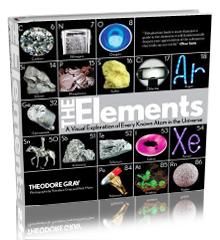Uranotype photograph. | |||
| Sample Image | |||
| Uranotype photograph. Blake Ferris of New York has been experimenting with exotic, radioactive chemistries for photography. No, I don't know why, but you can see (and buy) the results on his website and on eBay. It turns out silver isn't the only metal whose salts can made light-sensitive: Uranium works too. This is a photograph of the Nagasaki nuclear bomb explosion rendered in uranyl ferricyanide. It's mildly radioactive, but we can be thankful he modeled his photochemistry after the uranium tamper rather than the plutonium pit of the bomb: That would have been one hot photo! Here is how Blake explains the process: In the 19th century, when silver-based photography was just one approach among many others, UV-sensitive uranium salts were a familiar part of the early photographer's formulary. Commercial uranium printing paper was manufactured until 1899, and mixtures containing uranyl nitrate were commonly used to tone and intensify silver prints well into the 20th century. In earlier times, the uranyl compounds were made from undepleted uranium, and had non-negligible gamma emissions. Today, uranium photography is virtually nonexistent, but Kodak still makes a uranium toner, and uranyl acetate is regularly used in electron microscopy.Blake can print your own large-format negative using this or other uranium-based processes, and also makes prints from historical negatives like this one: You can contact him by email at bferris@nyc.rr.com. Source: Blake Ferris Contributor: Blake Ferris Acquired: 25 October, 2003 Text Updated: 11 August, 2007 Price: Donated Size: 4" Purity: 1% | |||
|

